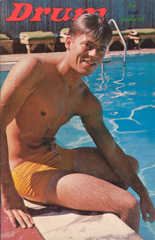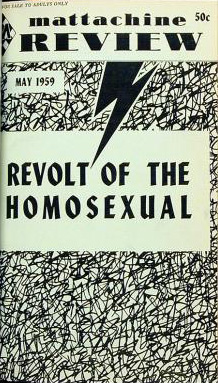
The Mattachine Society, founded in 1950, was an early national gay rights organization in the United States, preceded by several covert and open organizations, such as Chicago's Society for Human Rights. Communist and labor activist Harry Hay formed the group with a collection of male friends in Los Angeles to protect and improve the rights of gay men. Branches formed in other cities, and by 1961 the Society had splintered into regional groups.

The Daughters of Bilitis, also called the DOB or the Daughters, was the first lesbian civil and political rights organization in the United States. The organization, formed in San Francisco in 1955, was initially conceived as a secret social club, an alternative to lesbian bars, which were subject to raids and police harassment.

The homophile movement is a collective term for the main organisations and publications supporting and representing sexual minorities in the 1950s to 1960s around the world. The name comes from the term homophile, which was commonly used by these organisations. At least some of these organisations are considered to have been more cautious than both earlier and later LGBT organisations; in the U.S., the nationwide coalition of homophile groups disbanded after older members clashed with younger members who had become more radical after the Stonewall riots of 1969.

One, Inc., or One Incorporated, was one of the first gay rights organizations in the United States, founded in 1952.
The Society for Human Rights was an American gay-rights organization established in Chicago in 1924. Society founder Henry Gerber was inspired to create it by the work of German doctor Magnus Hirschfeld and the Scientific-Humanitarian Committee and by the organisation Bund für Menschenrecht by Friedrich Radszuweit and Karl Schulz in Berlin. It was the first recognized gay rights organization in the United States, having received a charter from the state of Illinois, and produced the first American publication for homosexuals, Friendship and Freedom. A few months after being chartered, the group ceased to exist in the wake of the arrest of several of the Society's members. Despite its short existence and small size, the Society has been recognized as a precursor to the modern gay liberation movement.
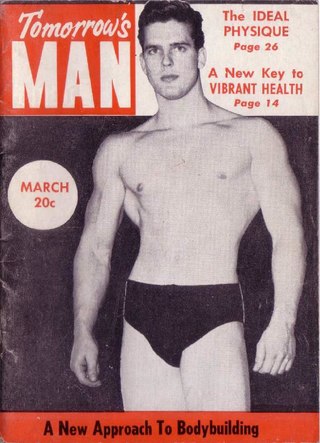
Physique magazines or beefcake magazines were magazines devoted to physique photography — that is, photographs of muscular "beefcake" men – typically young and attractive – in athletic poses, usually in revealing, minimal clothing. During their heyday in North America in the 1950s to 1960s, they were presented as magazines dedicated to fitness, health, and bodybuilding, with the models often shown demonstrating exercises or the results of their regimens, or as artistic reference material. However, their unstated primary purpose was erotic imagery, primarily created by and for gay men at a time when homosexuality was the subject of cultural taboos and government censorship.
This is a list of notable events in the history of LGBT rights that took place in the 1960s.

Vice Versa (1947–1948), subtitled "America's Gayest Magazine", is the earliest known U.S. periodical published especially for lesbians. Its mission was to express lesbian emotion within the bounds of good taste.

Craig L. Rodwell was an American gay rights activist known for founding the Oscar Wilde Memorial Bookshop on November 24, 1967 - the first bookstore devoted to gay and lesbian authors - and as the prime mover for the creation of the New York City gay pride demonstration. Rodwell, who was already an activist when he participated in the 1969 Stonewall uprising, is considered by some to be the leading gay rights activist in the early, pre-Stonewall, homophile movement of the 1960s.
The Annual Reminders were a series of early pickets organized by gay organizations, held yearly from 1965 through 1969. The Reminder took place each July 4 at Independence Hall in Philadelphia and were among the earliest LGBT demonstrations in the United States. The events were designed to inform and remind the American people that gay people did not enjoy basic civil rights protections.
Clark Philip Polak was an American businessman, publisher, journalist, and LGBT activist.
The Janus Society was an early homophile organization founded in 1962 and based in Philadelphia. It is notable as the publisher of Drum magazine, one of the earliest gay publications in the United States and the one most widely circulated in the 1960s, and for its role in organizing many of the nation's earliest LGBT rights demonstrations. The Janus Society takes its name from the Roman two-faced God Janus of beginnings, endings, and doorways. The organization focused on a policy of militant respectability, a strategy demanding respect by showing the public gay individuals conforming to hetero-normative standards of dress at protests.

Henry Gerber was an early homosexual rights activist in the United States. Inspired by the work of Germany's Magnus Hirschfeld and his Scientific-Humanitarian Committee and by the organisation Bund für Menschenrecht by Friedrich Radszuweit and Karl Schulz, Gerber founded the Society for Human Rights (SHR) in 1924, the nation's first known homosexual organization, and Friendship and Freedom, the first known American homosexual publication. SHR was short-lived, as police arrested several of its members shortly after it incorporated. Although embittered by his experiences, Gerber maintained contacts within the fledgling homophile movement of the 1950s and continued to agitate for the rights of homosexuals. Gerber has been repeatedly recognized for his contributions to the LGBT movement.

The development of LGBT culture in Philadelphia can be traced back to the early 20th century. It exists in current times as a dynamic, diverse, and philanthropically active culture with establishments and events held to promote LGBT culture and rights in Philadelphia and beyond.
East Coast Homophile Organizations (ECHO) was established in January 1962 in Philadelphia, to facilitate cooperation between homophile organizations and outside administrations. Its formative membership included the Mattachine Society chapters in New York and Washington D.C., the Daughters of Bilitis chapter in New York, and the Janus Society in Philadelphia, which met monthly. Philadelphia was chosen to be the host city, due to its central location among all involved parties.
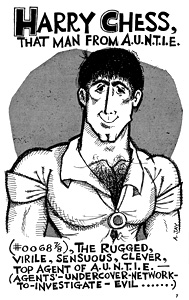
Harry Chess is the central character of the first gay-themed ongoing comic strip, first appearing in the mid 1960s. He was created by Al Shapiro under the pseudonym "A. Jay". He is a parody of the secret agent trope popularized in the 1960s, as exemplified by The Man from U.N.C.L.E. and the James Bond franchise. Rather than the heterosexual romantic themes common to the source material, the adventures of Harry Chess were openly homosexual, intended to appeal to gay male readers.
On April 25, 1965, the first of two historic sit-ins occurred at the popular Dewey's Restaurant in Philadelphia, Pennsylvania. It was one of the earliest demonstrations advocating for the LGBT community in United States history. Three unidentified teenagers and approximately 150 supporters walked into the Dewey's location at 219 South 17th Street, refusing to leave in the name of civil rights. This initial sit-in was in response to Dewey's recently implemented discriminatory policy claiming it would not serve “homosexuals,” “masculine women,” “feminine men,” nor “persons wearing nonconformist clothing.” Philadelphia police arrested the three teenagers, which led to further grass-roots action. Clark Polak, president of the local Janus Society, extended support to the protesters. Members of the Janus Society and other supporters circulated approximately 1500 flyers throughout the local area over the next five days. On May 2, 1965, protesters staged a second sit-in at Dewey's, although this time there were no arrests. Soon after the second sit-in, Dewey's Restaurant reversed their policy. The Dewey's sit-ins helped continue the path towards equal rights for many LGBT people in the United States.
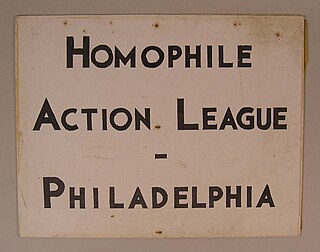
The Homophile Action League (HAL) was established in 1968 in Philadelphia as part of the Homophile movement in the United States. The organization advocated for the rights of the LGBT community and served as a predecessor to the Gay Liberation Front.

Richard Lamar Schlegel was an American LGBT rights activist and civil servant from Pennsylvania. Fired from federal and state government jobs on account of his sexual orientation, he filed a wrongful termination suit that reached the United States Supreme Court in 1970. Schlegel v. United States is considered an early landmark case in the American gay rights movement.
